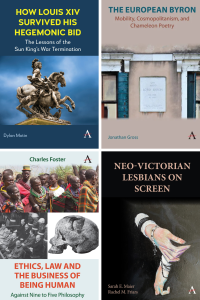The key to reducing violence lies in our cultures
This is a guest post by Marty Branagan, author of The Cultural Dimensions of Peacebuilding
Most of us – maybe even arms dealers – want to live in peace and safety. Yet violence is in epic proportions, particularly towards women, producing widespread fear and despair. Should we rely on governments and the United Nations to provide solutions? Or are the causes – and solutions – closer to home, in our cultures, thoughts, words, behaviours and everyday life?
Massacres by military forces or terrorists, school shootings, rapes, murders, knife attacks – all are underpinned by cultural violence, where aspects of our cultures support violence (e.g., in violent movies, language, parenting, education, patriarchy and war journalism). Politicians repeatedly urge us to ‘change the culture’. But what exactly does this mean, and how can it be achieved? And don’t governments send mixed messages when they spend far more on nuclear submarines, weapons and fighter planes than violence prevention?
This optimistic, solutions-oriented, innovative book (released on 8 October) by an academic/artist/activist details how cultural violence embeds fears and militaristic narratives in our psyches. Each aspect, alone, seems insignificant, but they add up. However, they can be transformed at grassroots level by ordinary people to create more peaceful cultures. The power to reduce violence is in our hands and TV remotes.
‘Come and see the violence inherent in the system’, says a grubby but politically aware peasant in Monty Python’s ‘Holy Grail’ movie. Most societies are drenched in cultural violence, and we are often unconsciously complicit in it.
- 90% of movies contain violence. They often glorify weapons and make people more fearful and likely to accept the narrative, pushed by the military–industrial complex and the media outlets it controls, that armed violence is necessary to protect ourselves. Some films, however, have no violence and even anti-violence themes.
- Histories and museums can glorify war and patriarchy, or commemorate effective nonviolent movements such as the suffragists.
- The military–industrial complex is gaining influence in universities and schools. Peace education, peace journalism and artistic artivism, although far less wealthy or politically connected, attempt to counter this influence.
- Our language is filled with violent terms, such as ‘to kill two birds with one stone’, which could instead be ‘feed two birds from one bowl’.
- Parenting and education can lead to damaged mass murderers like Stalin and Hitler, or empowered, critical-thinking, nonviolent citizens.
- Peaceful cultures already exist throughout the world, ranging from small Indigenous communities to whole regions of relative peace. We can learn from their example that peace is possible.
- War and militarism are gendered, and impact disproportionately on women, children, the elderly and less abled. Women often lead successful nonviolent movements but gain little recognition or resourcing.
- Religions can divide or bring people together in peace, tolerance and compassion. Inner peace can also be found through practices like yoga and meditation, and provide a foundation for broader peace.
Wars and violence are neither inevitable nor an inherent part of human nature. Through understanding cultural violence and how it supports direct violence, we can transform our beliefs, choices and behaviours to cultivate a more peaceful world from the ground up.
Latest Posts

The paradox of Thom Browne: how one designer redefined the suit for the 21st century
This is a guest post by Benjamin Wild, author of Thom Browne In just over twenty years, Thom Browne has achieved something remarkable: he has made the grey suit revolutionary....

Ada, meet Ada: bridging the two cultures
This is a guest post by Mark Seligman, author of AI and Ada: Artificial Translation and Creation of Literature Artificial intelligence has suddenly become real – or has it? To...

The Amendments to the Constitution, a pathway to the American experience
This is an interview with Blaine Kaltman, author of Perfecting the U.S. Constitution: 27 and Counting, The Amendments that Shaped America’s Future Q. What made you decide to write a...

Featured releases: September 2025
September marks the gentle shift from summer’s warmth to autumn’s calm, a month of balance and reflection. We are celebrating this month with an exciting line-up of new releases. From...

